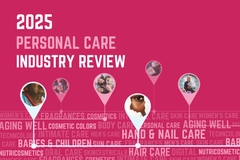EC may assess “internal procedures” amid claims it prioritizes business over human health

A European Ombudsman investigation accused the European Commission (EC) of delaying the ban of products that may cause cancer, infertility and other harm to health for nearly two decades. In response, the European Environmental Bureau (EEB) argues that the EC “prioritizes business interests over human and environmental health.”
Personal Care Insights speaks to the EEB and EC about how the delays occurred and how to remove the harmful products from shelves.
The NGO’s head of chemicals policy, Tatiana Santos, tells us: “In the absence of Commission decisions, substances of very high concern (SVHC) are permitted to remain in use for years, despite being recognized as the single most hazardous category of chemicals.”
“If the EC fails within this period, marketing of SVHCs should be suspended once the established sunset date set in Annex XIV is reached. The current situation favors market access over hazard protection, since, in the absence of a decision, the use of a substance of very high concern is allowed, rather than taking a more protective approach to prevent exposure to potentially harmful chemicals.”
EC spokesperson Johanna Bernsel says: “The timeline of our decision-making procedure is not entirely in the EC’s hands, as certain steps are not within the EC’s control. Also, it may be affected by the workload related to legal and procedural requirements, including the Commission’s commitment to better regulation.”
However, the spokesperson notes that the EC is “willing to examine how standard internal procedures could be applied more efficiently.”
Assessing response
The Ombudsman asked the EC to review its internal procedures for preparing authorization decisions for the REACH regulation, which intends to phase out or control the use of dangerous chemical substances.
 The EC says it will look into how to make its internal proccess more effiecient to remove harmful chemicals in products.The EC spokesperson says that it is assessing the Ombudsman’s findings and recommendations and plans to respond with an opinion within three months.
The EC says it will look into how to make its internal proccess more effiecient to remove harmful chemicals in products.The EC spokesperson says that it is assessing the Ombudsman’s findings and recommendations and plans to respond with an opinion within three months.
“We consistently have a constructive and effective working relationship with the Ombudsman to promote good administrative practices. The Commission takes human health and the protection of the environment extremely seriously, and REACH is the most advanced and comprehensive chemical legislation in the world.”
Bernsel says the EC is “committed to ensuring as much transparency as possible” when regulating cosmetic products. He continues that it goes “beyond our obligations in the Comitology Regulation when publishing draft decisions in the comitology register.”
“I also recall president Ursola von der Leyen’s commitment in her political guidelines to put forward a new chemicals industry package aiming to simplify the REACH Regulation.”
Abiding by recommendations
The EEB says the EC should follow the European General Court’s and the Ombudsman’s recent recommendations.
“As the European Court of Justice has ruled, the Commission and The European Chemicals Agency (ECHA), following its guidance, have wrongly implemented the authorization chapter by accepting upstream applications for authorization with insufficient information on the risks of the uses applied for and insufficient information on the lack of alternatives.”
“These applications, while not complying with the legal requirements, have been assessed by ECHA Committees and afterward have been granted authorization.”
The Ombudsman recommends the EC review its internal procedures by:
- Applying the rule that it is up to applicants to demonstrate that they have satisfied the legal conditions for obtaining the authorization by providing sufficient information.
- Ensuring that applications containing insufficient information are promptly dismissed, so that companies that have submitted them can no longer use the dangerous substances in the EU.
- Publishing more substantial summary records of the REACH Committee meetings will allow the public to follow the progress of each authorization file and understand outstanding issues and any reasons for delays.
Chemicals in cosmetics
The EEB says that the carcinogenic chemical chromi The European Ombudsman asks the EC to ban cancer causing chemicals from consumer products. um trioxide is used to plate perfume or lipstick caps. Although the use of chromium is confined to an industrial context, these products become available to the consumer.
The European Ombudsman asks the EC to ban cancer causing chemicals from consumer products. um trioxide is used to plate perfume or lipstick caps. Although the use of chromium is confined to an industrial context, these products become available to the consumer.
The NGO also identified restrictions not entirely in force yet, such as intentionally added microplastics in cosmetics, silicones and PFAS.
“Exfoliating microbeads and plastic loose glitter are the only uses restricted today since last year. The other uses, namely rinse-off products, waxes, polishes, synthetic polymer microplastics for encapsulation of fragrances and lip products or make-up products, won’t be effectively restricted until 2027 to 2035.”
Silicones in cosmetic products have several functions, such as hair and skin conditioning. Silicones D4, D5 and D6 have been on the REACH candidate list since 2018, but the EC never placed them on the regulatory list, annex XIV.
In April 2017, the EC announced its intention to add wash-off uses of D6 use in personal care products to the prior restriction and assess the need for a further limitation of D4, D5 and D6 in leave-on personal care products and other consumer and professional uses (dry cleaning, waxes and polishes, washing and cleaning products). EU regulators approved the REACH restriction on the silicones, effective June 2026.
Due to their water resistance and long-term wear properties, Santos says that PFAS continues to be used in cosmetics, such as waterproof mascara, anti-aging treatments and foundation.
“Beyond cosmetics, we can also find them in personal care products like dental floss. This restriction is ongoing, currently, ECHA working on the opinion.”












